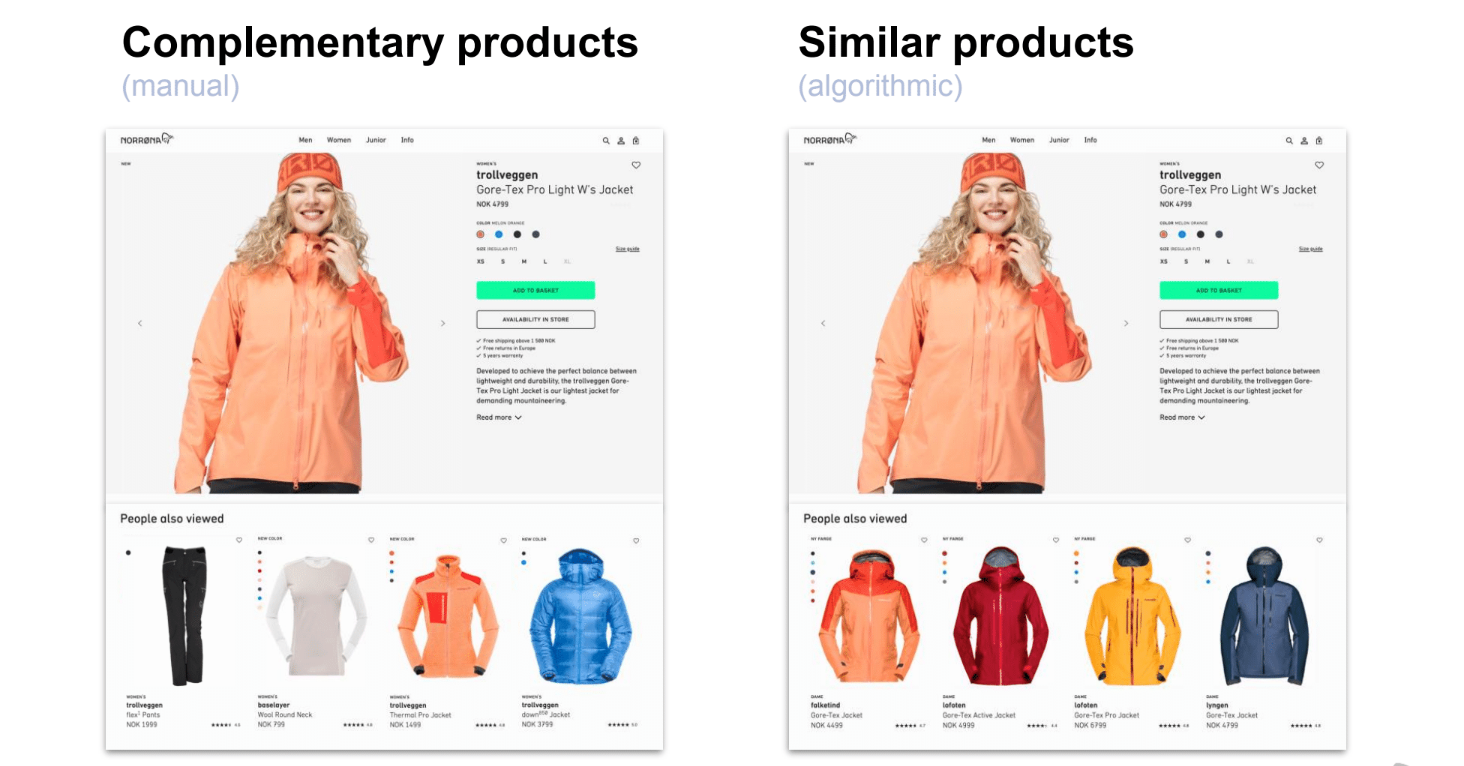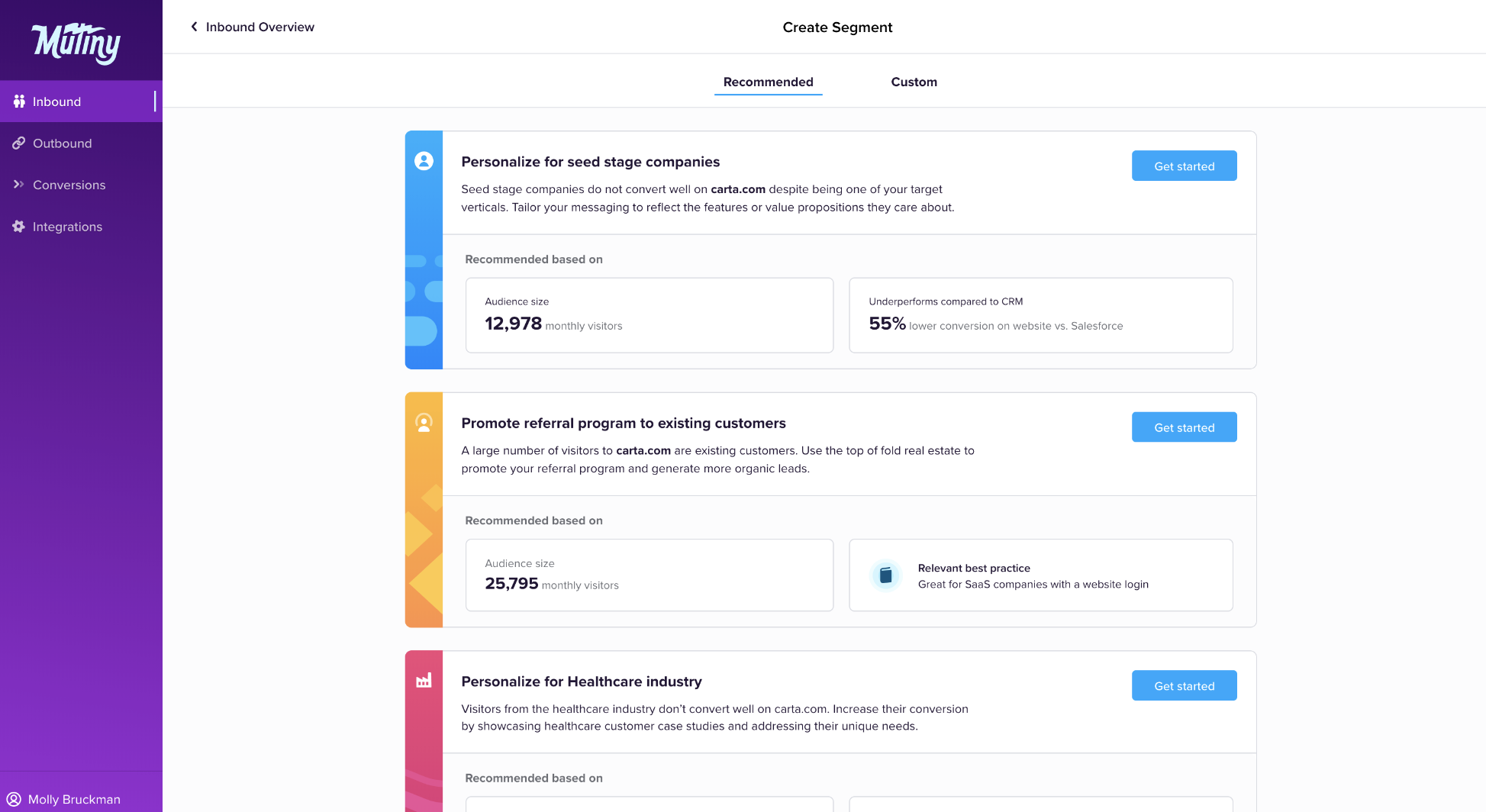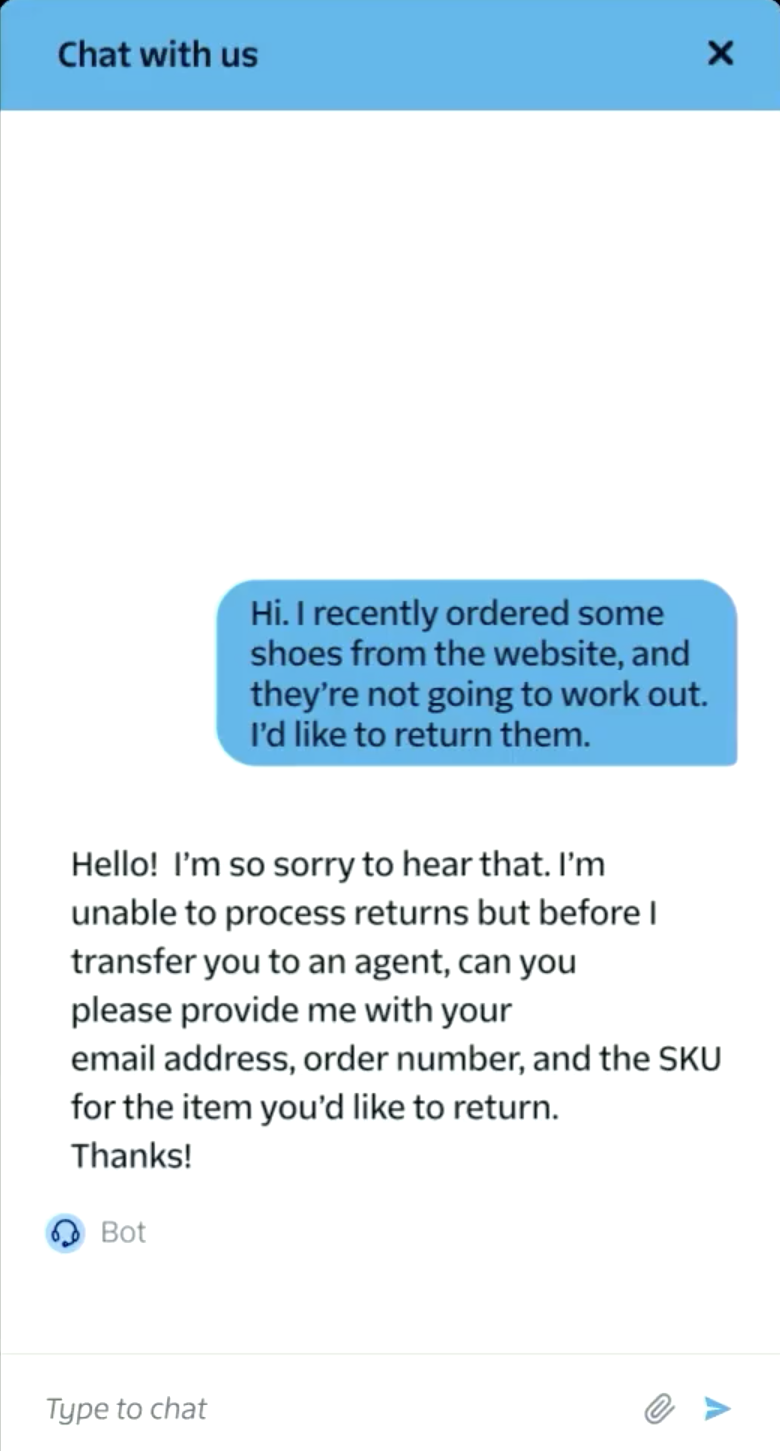AI + Personalization: 5 Ways to Use It
Companies that use AI and a CDP can create strong, personalized campaigns that are unique to their customers. This blog explores 5 use cases, complete with examples.
Companies that use AI and a CDP can create strong, personalized campaigns that are unique to their customers. This blog explores 5 use cases, complete with examples.
As a runner, I’m often looking to try out new products. Sucked in by an Instagram ad, I found a new–to–me store with seemingly good feedback (or, at least they had pictures of happy runners, which helps.)
When I opened up my order, I was pleasantly surprised: a hand–written note tucked into the package. The note thanked me for my purchase, and contained recommendations on how to use that product. Not only did the note make me smile, it made me feel valued as a customer.
But I am one of many customers who appreciate feeling valued. According to our State of Customer Engagement, 86% of consumers say that personalized experiences increase their loyalty to specific brands.
For now, a hand–written note is a lovely, personal touch. But is there a way to scale this up when buying from a larger brand? Do you think big brands like Nike or New Balance can hand write a note for each customer?
Not yet. But we can start to replicate that dopamine hit digitally.
When companies rely on managing data in a customer data platform (CDP) in tandem with artificial intelligence (AI), they can create strong, personalized campaigns that reach and inspire their customers.
In this blog, we’ll share 5 examples of ways to use AI to personalize interactions with your customers.
You can have the best marketers, data analysts, and engineers working at your company, but if you are relying on poor quality data, your personalization efforts can have a negative impact.
We’ve written about this topic before, so it’s worth taking a deep dive. But in summary, the customer data you collect likely isn’t ready for AI consumption out of the box.
Some reasons the data is not yet ready include that it could be living in different locations, it could be duplicative and repetitive, or some of your customer information might be outdated.
But once you have your data cleaned and ready to be ingested by an AI tool, you can start on the road to personalization.
Here are 5 simple ways to get started.
AI has revolutionized the way online retailers interact with their consumers. Think about the first time you visit a company’s website – you often see a neat, clean homepage with popular products listed. But once you click on an item, the website starts to learn about your preferences and, with the right tools in place, can begin to send you personalized recommendations.
With Segment’s CDP connected to your website, it collects customer data (ex. clicks, pageviews, adding to cart, purchases, etc.) to start building a customer profile.
Using this CDP profile, AI models can generate personalized product recommendations for each customer based on their unique browsing history, increasing the likelihood of conversions and enhancing the customer experience.
Take Norrøna, an outdoor clothing brand in Scandinavia. They built a complete recommendation platform – from data collection to machine learning predictions, in just six months.
Norrøna relied on Segment for the collection and management of client–side and server–side customer data. Segment assigned an ID to each customer and ensured the data collected on them was clean, thanks to the schema.
The team then added Google Cloud Platform (GCP) and Big Quary on top of the clean datasets to analyze algorithms from the website.
Through this collaboration, Norrøna performed an A/B test to determine if manually picking recommended items would be more effective than the machine learning generated recommendations. The latter won out, resulting in:
+187% click–through rate
+50% conversion rate
100s of hours of manual labor saved

Using AI to serve personalized product recommendations is a way to ensure your customers are being served optimized content. It can also build trust with your brand, leading to repeat purchases.
The ways in which customers interact with your website and emails can be a great way to learn about their goals and use that to send personalized content.
Imagine a future where each customer receives emails based on their unique relationship with your brand.
AI is getting us close as it can identify patterns in user interactions and help create behavior–based email campaigns. If a customer frequently clicks on one type of email content, an AI–powered system could trigger an email to that customer containing content related to what they are clicking.
You can use Segment’s CDP to track user interactions and behaviors across channels. Then add a recommender–as–a–service (RaaS) that leverages real–time data to provide the most accurate content and product recommendations for each user.
Segment can send user interactions (views, purchases, plays, etc.) directly to Recombee, which produces accurate recommendations to your users based on their latest interests and behaviors.
Recombee recommendations are specific to each user, in real–time, and can be applied throughout the customer journey. The result is personalized emails to each customer based on their unique relationship with your brand.
Using Twilio Engage, you can send emails right from the Segment app, relying on your customer data to lead the way.
The days of static landing pages are in the past, thanks to tools that collect user behavior and churn out personalized website content in real-time.
In fact, our own website displays dynamic content to customers based on their own interests, thanks to the integration with Mutiny. Whenever a visitor lands on the Segment website from a particular IP address, they will be met with personalized landing pages based on their unique behavior. This means personalized content for every single visitor.
Mutiny is also a partner of Segment, bringing user’s website events directly to your CDP. The Mutiny and Segment integration lets customers:
Analyze personalization impact across the entire website
Choose data driven recommendations to determine the highest ROI segments to personalize
Apply best practices based on examples from high growth B2B companies

These real–time analytics provide near instantaneous insights into customer behavior, which allows for data–driven decision–making – take action in the moment, not after the fact (when it might be too late.) This almost instantaneous personalization encourages the customer to spend more time on your website.
How much time and effort would it save you, as a customer and a company, to rely on chatbots to provide information that would benefit your specific need?
As a customer, you’ll receive immediate answers that can help you make an informed decision. And as a company, such a unique chatbot would ensure your customers are getting the most accurate answers, instantly.
At Signal 2023, our CEO Jeff Lawson shared the idea of CustomerAI, which is essentially a chatbot that would act as a magical employee who would look after each and every customer.
CustomerAI is a set of capabilities that use generative and predictive AI to perceive customers and the signals they are giving you, and activate that undertaking across every touchpoint you have with the customer.
You can use this new generation of GPT powered intelligence to share information to your customers. Point it at your company’s:
Website – for product information, policies
Tools/APIs – allow the bot to do things like looking up inventory, customer status, returns
Guardrails – what you want the bot to avoid, such as talking poorly about competitors
The CDP supplies the chatbot with historical customer data, while AI analyzes the conversation in real–time to understand customer intent and personalize responses. This creates a more engaging and relevant customer experience.
Suddenly you have an AI assistant that knows your products, services, company, pricing, policy, and can do amazing things on behalf of your customers.

You can watch the full session here, or read a summary of the session in our blog.
What if you had a crystal ball that told you the likelihood of a customer’s actions? You could place your time and effort on what the customer really cares about, helping ensure their needs are met.
Segment’s Predictive Audiences are a less-fragile way to show these customer intentions. Predictive modeling has benefitted from advancements in AI and the rapid creation of customer data, and it now takes a fraction of the time it once took to unlock nuanced customer insights.
Predictive Audiences let businesses target users who have an increased likelihood of performing an event. It works with give out-of-the-box audience templates that are pre-built with Predictions. They include templates like “ready to buy” or “potential VIPs.”
AI can then analyze these profiles to create predictive segments. For instance, AI could identify a group of customers who are likely to churn based on their behavior. This allows you to proactively engage with these customers through tailored retention campaigns.
In the end, leveraging AI and ML with a CDP like Twilio Segment helps you work smarter, not harder, to deliver personalized experiences based on your customer’s unique relationship with your brand.

Our annual look at how attitudes, preferences, and experiences with personalization have evolved over the past year.